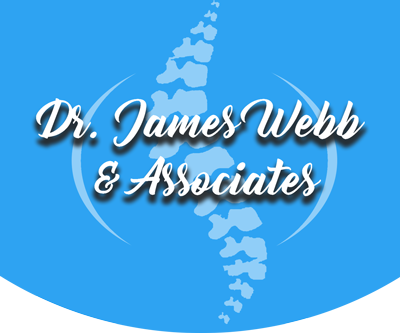You’ve probably heard all about osteoporosis from all the pharmaceutical commercials plastered across your television. But, how much do you really know about the effects, and what makes you at a high risk for developing this disorder? (Hint: You’re probably more at risk than you think.)
To help you understand further, we’ve put together a short guide with tons of information about this increasingly common health issue. Keep reading to learn 55 fast facts about osteoporosis and bone health.
Things You May Not Know About Osteoporosis
If you don’t know a lot about osteoporosis, these bits of information might actually surprise you. Here’s what you need to know.
- Human bone is a living organism made from tissue that is both flexible and strong.
- During your lifetime, you will lose portions of old bone that are replaced by new bone.
- Osteoporosis is the loss of too much bone or the slow regrowth of bone.
- Peak bone density happens around the age of thirty for most people.
- If you have osteoporosis, you cannot actually feel your bones weakening.
- Somewhere around nine to ten million people in the United States suffer from osteoporosis.
- Around 44 million Americans suffer from bone loss, the precursor to osteoporosis.
- Approximately 50% of all women and 25% of all men over the age of fifty will suffer bone loss.
- Bone loss is known to speed up around midlife, with the most significant results happening after age fifty.
- A loss of bone density does not necessarily mean you have osteoporosis, but can be a key indicator.
- There is no cure for osteoporosis.
- Some ethnicities are more likely to experience osteoporosis than others.
- African American women are more likely to have osteoporosis in their later years, thanks to related disease sickle cell anemia and lupus.
- Right around 20% of Asian American females over the age of fifty suffer from osteoporosis.
- Many women lose up to 1/5th of their bone density in the first few years following menopause.
- Certain common medications (OTC & prescription) can lead to bone loss later in life.
- Aluminum-containing antacids may cause bone loss.
- Some Antiseizure medicines (including Dilantin or Phenobarbital) may cause bone loss.
- Aromatase inhibitors such as Arimidex, Aromasin, Femara may cause bone loss.
- Cancer chemotherapy drugs may cause bone loss.
- Certain birth control drugs, anti-depressants, proton pump inhibitors (PPIs) may cause bone loss.
- Steroid drugs such as cortisone and prednisone may cause bone loss.
- Certain autoimmune disorders, digestive/gastrointestinal disorders increase the likelihood of osteoporosis.
- Eating disorders, endocrine, hormonal disorders can increase the likelihood of osteoporosis.
- Cancer patients who have undergone treatment have a bigger chance of experiencing osteoporosis or bone density loss.
- A key indicator that you have a greater disposition for osteoporosis is if a biological parent or grandparent broke bones as an adult.
- Despite previous health history and genetic causes, osteoporosis is largely preventable.
- Your diet plays a large role in whether or not you’ll have bone density problems after the age of fifty.
- Consuming plenty of fruits, vegetables, and calcium can help prevent osteoporosis.
- There is a known link between those who suffer from lactose intolerance and an increase in bone density issues.
- Vitamin D plays a large role in helping prevent osteoporosis in seniors.
- Smoking and drinking alcohol can make osteoporosis and bone loss worse.
- Bone reacts to regular physical exercise by becoming stronger, which can counteract many effects of osteoporosis.
- Having a regular exercise plan that consists of at least 2.5 hours of physical activity per week can improve bone density and overall wellness.
- The best exercises for strengthening your bones are those considered weight-bearing, such as walking, jogging, hiking, dancing, bodyweight exercise, lifting weights.
- Many people do not know that they have osteoporosis or bone density issues until they suffer a break or become injured.
- The chance of being injured or breaking a bone increases significantly when you have osteoporosis.
- On average, osteoporosis accounts for more days spent in the hospital after injury than those experienced by a breast cancer patient.
- According to statistics, someone in the United States with osteoporosis suffers a fracture every three seconds.
- Common areas when osteoporosis patients suffer broken bones include joints, such as wrists, hips, and knees.
- Spinal damage due to osteoporosis is also quite common and extremely painful.
- Risk of refracture within two years is incredibly high for those with osteoporosis related injuries.
- Preemptively asking your medical provider for a bone density test can help determine if you have an issue.
- In older adults, the mortality rate in the first year after a hip fracture is as high as 24%.
- Most Caucasian women will lose 33% of their hip bone density by age eighty.
- Medications are available for the treatment of osteoporosis.
- Those taking medications for osteoporosis should have routine bone density scans to monitor effectiveness.
- Caregivers of older adults should ensure their loved one enjoys a healthy diet, gets plenty of exercise, and takes supplemental calcium and vitamin D.
- The rate at which older Americans are diagnosed with osteoporosis is on the rise, but some medical professionals feel this is due to better diagnosis methods.
- The majority of people who suffer a minor fracture from low bone density won’t ever report it to a doctor until a subsequent or more serious incident occurs.
- Fractures due to bone density issues can happen at any time, even when you’re getting up out of bed in the morning, sneezing, or stretching.
- Many people who experience back pain are actually suffering from a fracture without knowing it.
- World Osteoporosis Day takes place on October 20th each year and the goal is to bring awareness to this incredibly common health condition internationally.
- May is National Osteoporosis Month and is also about increasing awareness in the USA.
- If you have questions about osteoporosis and preventative steps, you should consult with a healthcare professional for further guidance and screening.
Conclusion: Osteoporosis Facts and Prevention
Now that you know who has the highest risk of suffering from bone density issues including osteoporosis, it is time to ensure you’re doing everything possible to prevent it from affecting your health.
To bring awareness to risks associated with osteoporosis…
During National Osteoporosis Month, Dr. James Webb is offering patients the opportunity to have a free bone density scan during the month of May.
Appointments are limited to those who qualify based on past health history and other factors. All you have to do is contact our team to schedule an appointment and we’ll help shed light on your current risk. Please contact us today for details.
SELECTED REFERENCES
- https://cdn.nof.org/wp-content/uploads/2016/02/25-Facts-About-Your-Bones-and-Osteoporosis.pdf
- https://www.bones.nih.gov/health-info/bone/bone-health/exercise/exercise-your-bone-health
- https://cdn.nof.org/wp-content/uploads/2015/12/Osteoporosis-Fast-Facts.pdf
- https://www.nof.org/patients/treatment/nutrition/
- https://www.osteoporosis.foundation/patients#world-osteoporosis-day
- https://www.osteoporosis.foundation/facts-statistics/epidemiology-of-osteoporosis-and-fragility-fractures
- https://americanbonehealth.org/fast-facts/
- https://www.rush.edu/news/5-osteoporosis-facts
View our 55 Fast Facts About Osteoporosis & Bone Health Infographic ›

